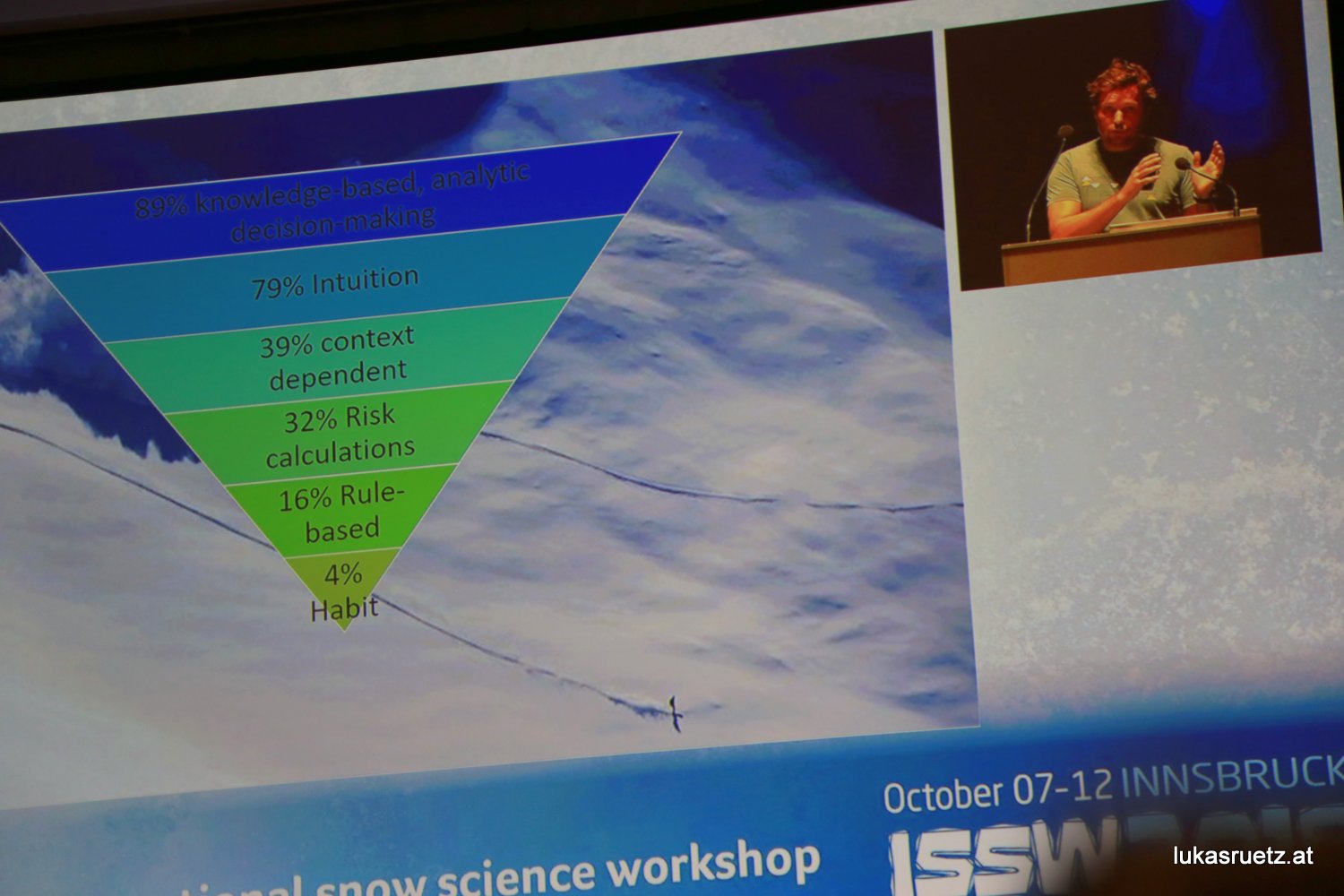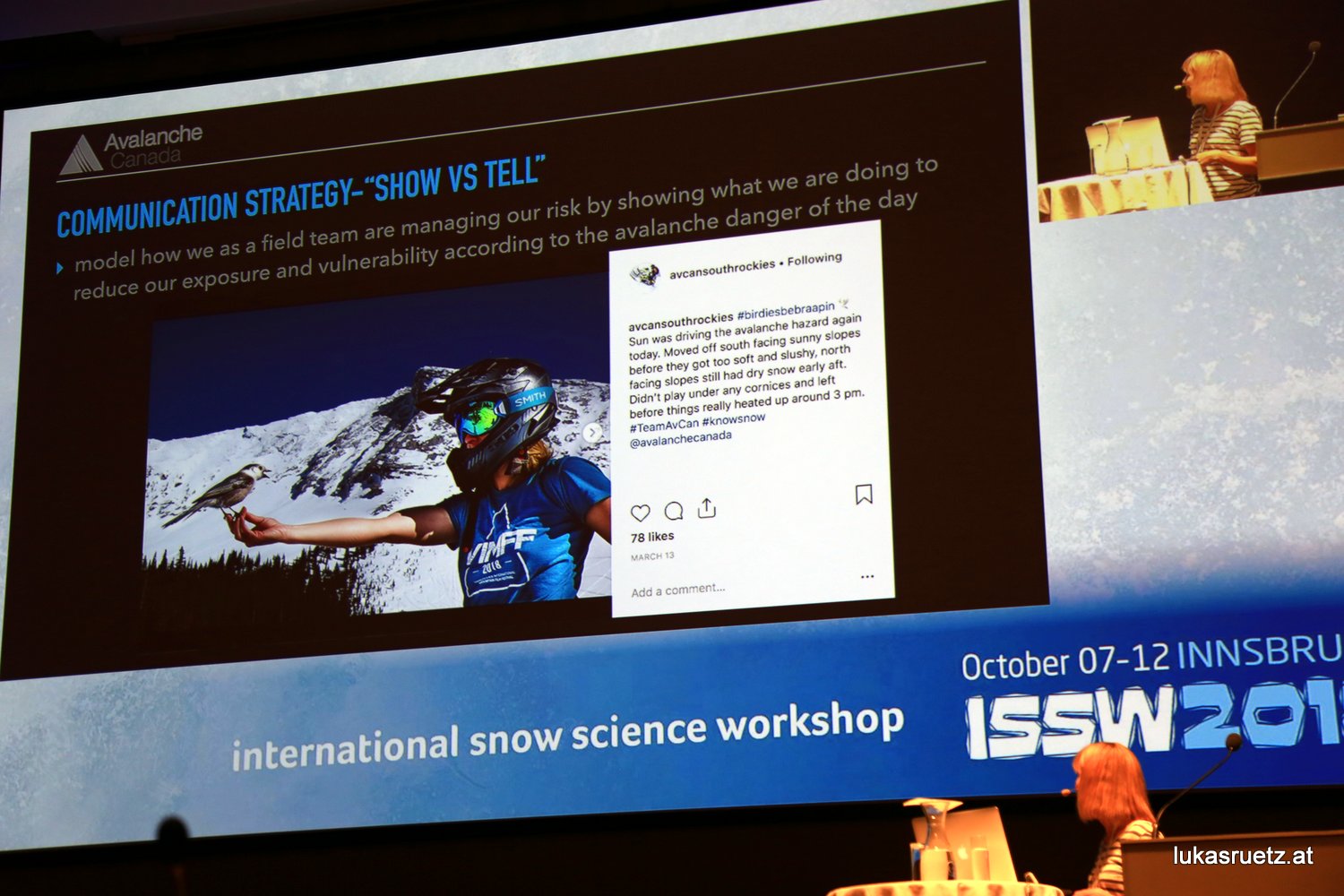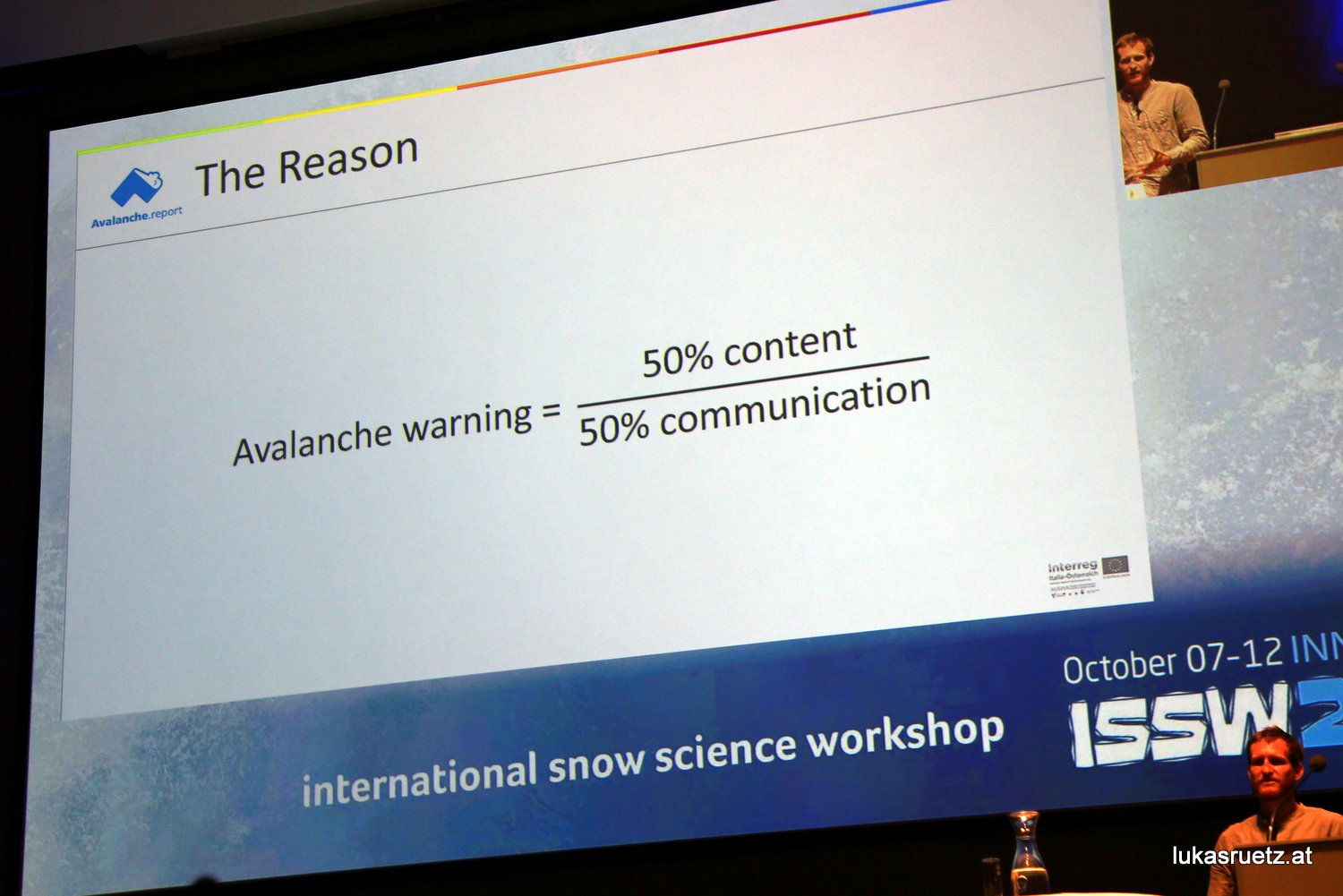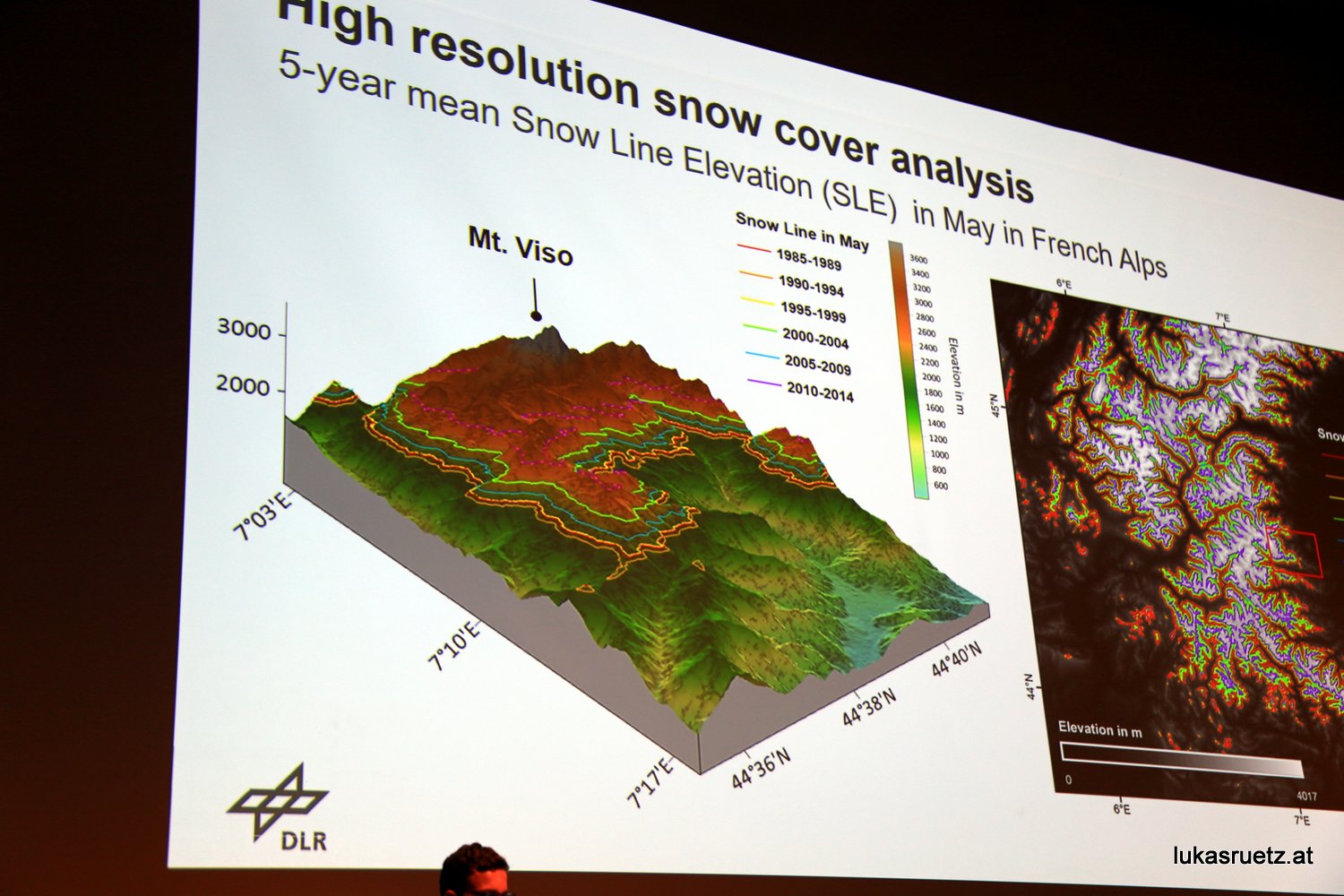 Beim International Snow Science Workshop in Innsbruck im vergangenen Oktober wurden 372 schriftliche Arbeiten eingereicht. Der Schneestöberer hat für die besonders ambitionierten Leser die interessantesten 10% daraus destilliert und mit direktem Link zur jeweiligen Arbeit gesammelt.
Beim International Snow Science Workshop in Innsbruck im vergangenen Oktober wurden 372 schriftliche Arbeiten eingereicht. Der Schneestöberer hat für die besonders ambitionierten Leser die interessantesten 10% daraus destilliert und mit direktem Link zur jeweiligen Arbeit gesammelt.

Tourenplanung
- Avalanche terrain maps for backcountry skiing in Switzerland (Harvey et al.)
- Quantitative Risk Reduction Method (QRM), a datadriven avalanche risk estimator (Schmudlach et al.)
Entscheiden im Gelände
- Analysis of decisionmaking frameworks for avalanche terrain (Landrø et al.)
- The Dangerator: a method for estimating avalanche danger in areas with no public avalanche forecast (Floyer et al.)
- Acceptable risk for backcountry skiers and riders from avalanche hazards: Differences in uphill and downhill terrain selection (Miller et al.)
- To go or not to go: Decision making at individual slope (Harvey et al.)
- Are You Sharp While Ascending? (Hetland et al.)
Lawinenausbildung
- Avalanche education in Austria about the current status and a new concept (Ruetz, Walcher)
- The „essential distinctions“ rethinking avalanche education and communication habits (Ruetz)
- How do experts interpret avalanche terrain from a map? (Schmudlach et al.)
- Are avalanche courses the new highrisk sport? – Use of Sensation Seeking Scale in avalanche education highlights the need for reassessment of participants’ true nature and suggests that the test itself can serve as a learning tool (Mårtensson et al.)

Gefahrenkommunikation
- Show, Don’t Tell: Modelling behaviour on social media as a strategy for influencing behaviour in data sparse regions (Coulter et al.)
- Avalanche Canada’s Special Public Avalanche Warning: Development and Evolution of an Effective Risk Communications Tool (Clayton et al.)
- Efficacy in communication of avalanche warnings (Engeset et al.)
- Peer Ambassadors at Work: Modeling Good DecisionMaking in „Aggro“ Freeride Films (Edgerly)
- Words of Estimative Probability and the Language of the North American publich Avalanche Danger Scale. Are We All Communicating the Same Risk? (Tart)
Lawinenvorhersage
- Quantifying the obvious: the avalanche danger level (Schweizer)
- Consistency in regional avalanche forecasts: a look across borders (Techel et al.)
- How to assess and communicate persistent weak layers: a forecaster’s perspective (Nairz et al.)
- When do avalanches release: investigating time scales in avalanche formation (Herwijnen et al.)
- Methods used in operational avalanche forecasting around the globe a comprehensive study (Ágoston et al.)
Schneedecke: Stabilität und Schichtung
- Snowpack stabilization following storms: Field experiments and modelling of temporal changes in snow mechanical properties following loading (Birkeland et al.)
- Release of avalanches on persistent weak layers in relation to loading events in Colorado, USA (Konigsberg et al.)
- Measuring snow mechanical properties typical of storm snow instabilities (Reuter et al.)
- Quantitative comparison of snow profiles (Hagenmuller et al.)
- Red Snow: killer of the snowpack stability? (Valt et al.)
- Investigation of the interplay between shear failure and normal collapse of weak layers using microstructurebased mechanical simulations (Mede et al.)
- Graupel as a Persistent Weak Layer in a Maritime Climate (Reynaud)

Lawinenwarnung ist mehr als nur naturwissenschaftliche Inhalte.
Klimawandel
- Climate change in the Alps and its consequences for snow (Gobiet et al.)
- Global warming reduces the consequences of snowrelated hazards (Hestnes et al.)
Digitale Technologie
- The effect of communication equipment on avalanche transceivers (Forer et al
- Designing a wearable persuasive avalanche warning system (Prezenski et al.)
Fernerkundung
- Mysnowmaps: operative highresolution real-time snow mapping (Dall’Amico et al.)
- Operational Monitoring of Alpine Snow Cover within the European Copernicus Programme (Nagler et al.)
- Using Time Lapse Photography to Document Terrain Preferences of Backcountry Skiers (Saly et al.)
- Community Snow Observations (CSO): A Citizen Science Campaign to Validate Snow Remote Sensing Products (Wikstrom Jones et al.)

Skigebietsmanagement & Schneeproduktion
- Simulating snow conditions in ski resorts with the physically based snowpack models AMUNDSEN, Crocus, and SNOWPACK/Alpine3D (Hanzer et al.)
Computermodelle: Von Schneeschichtung bis Lawinendynamik
- Distributed modelling of snow cover instability at regional scale (Bellaire et al.)
- Unified modeling of the release and flow of snow avalanches using the Material Point Method (Gaume et al.)
- Rezoning after installing avalanche mitigation measures: case study of the Vallascia avalanche in Airolo, Switzerland (Stefan Margreth)
- Anticrack nucleation in snowpacks without assuming initial defects: modeling dry snow slab avalanches (Rosendahl et al.)
Modellketten
- Model fusion from weather activity to avalanche length (Jöbstl et al.)
Wintersportgeräte
